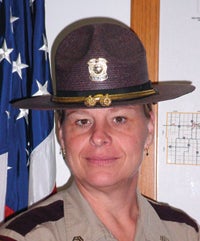What happens when cars crash head-on?
Published 10:56 am Thursday, June 6, 2013
Column: Ask a Trooper, by Jacalyn Sticha
Q. There is an article I have read, many times, that goes through the first second of a fatal crash. I was wondering if it is accurate?
A. I am familiar with it, and I found an old copy. The author is unknown; nonetheless, the essay has been read, likely, by millions in the United States. Many variables would alter the timing and outcome of a crash: speed, location of impact, car safety features, age of occupants, etc. However, it does accurately represent the violent nature of a crash and how quickly it happens, as well as the increase in severity when a motorist is not buckled up. I think you can consider it a good reminder.
Here it is:
Do you know what happens in the first fatal second after a car going 55 mph hits a solid object?
1. In the first 10th of a second, the front bumper and grill collapse.
2. The second 10th finds the hood crumbling, rising and striking the windshield as the spinning rear wheels lift from the ground. Simultaneously, fenders begin wrapping themselves around the solid object. Although the car’s frame has been halted, the rest of the car is still going 55 mph. Instinct causes the driver to stiffen his legs against the crash, and they snap at the knee joint.
3. During the third 10th of the second, the steering wheel starts to disintegrate and the steering column aims for the driver’s chest.
4. The fourth 10th of the second finds two feet of the car’s front end wrecked, while the rear end still moves at 35 mph. The driver’s body is still traveling at 55 mph.
5. In the fifth 10th of a second, the driver is impaled on the steering column, and blood rushes into his lungs.
6. The sixth 10th of a second, the impact has built up to the point that the driver’s feet are ripped out of tightly laced shoes. The brake pedal breaks off. The car frame buckles in the middle. The driver’s head smashes into the windshield as the rear wheels, still spinning, fall back to the earth.
7. In the seventh 10th of a second, hinges rip loose, doors fly open and the seats break free, striking the driver from behind.
8. The seat striking the driver does not bother him because he is already dead. The last three 10ths of a second mean nothing to the driver.
Moral: You may choose to break the law and not buckle up. However, you cannot break the laws of physics.
Q. I was on the interstate shoulder, taking a phone call, and a state trooper pulled in behind me. He asked if everything was OK and advised me that it is illegal to stop on a freeway shoulder except for emergencies. Is this right?
A. First, thank you, for being safety-minded and avoiding distracted driving. Freeway shoulders are off limits, except in an emergency. This has been restricted since their inception, long before cellphones, as it provides for a safer environment. Signs are posted at all entrance ramps onto the freeway. Pedestrians, bicycles, motorized bicycles and non-motorized traffic also are prohibited onto the freeway.
We encourage motorists to exit the freeway and find a safe/legal place to stop and use their phones. Vehicles stopped on the shoulder create a safety hazard, with high speeds and limited space; shoulders should only be used if a driver has no choice. In addition, restricting shoulder use helps reduce vehicles merging slowly and abruptly back into fast moving traffic.
This is also the reason for freeways being access controlled and having acceleration/deceleration lanes and ramps; minimize extreme differences in speeds, remove intersections and crossing problems and limiting unexpected obstacles.
When dispatch receives a call about a vehicle on the freeway shoulder, a trooper is sent — when the trooper arrives, the vehicle and driver are, often, gone or just chatting on the phone. This consumes a great deal of a trooper’s time, preventing him or her from utilizing time as efficiently as possible with such great daily demand. On other roadways, I would always encourage motorists to find a safe place to pull over well away from the travel portion of the roadway.
Jacalyn Sticha is a sergeant with the Minnesota State Patrol.


